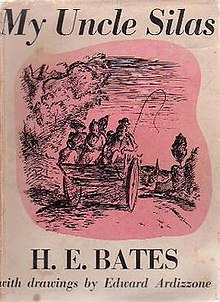Inspiration
Bates's Uncle Silas figure, and many of the lineaments of his character, were based on a real person named Joseph Betts, the husband of H. E. Bates's maternal grandmother's sister Mary Ann. Betts lived in a village in the Ouse Valley, was born in the early 1840s, and lived to the early 1930s. The figure he portrays is Rabelaisian and robust, a true countryman of pithy and roguish character, simultaneously earthy and whimsical, crabbed and wicked, yet full of humour and "strong original devilishness."
Bates considered that, if anything, he had understated the true English rural character. The delightful stories and scenes were drawn from his own fragrant memories of a Northamptonshire childhood, from stories actually told by his great-uncle, or from a more general country lore of apocryphal legends such as any attentive child might be aware of. The boy (representing the author in childhood) enters into most of the stories, sometimes as a listener and sometimes a participant: his relationship to Silas and the old man's way of putting a slant on his stories for the boy's benefit are essential parts of the whole effect.
Publication
The first collection of stories (My Uncle Silas) was published in 1939, though the first story (introducing the character), The Lily, was first published separately about six years previously, and had been followed by The Wedding and The Death of Uncle Silas. In a large public correspondence to the author, the British and colonial public demanded the resurrection of Uncle Silas; and so a further 11 stories were written to complete the volume, illustrated by Edward Ardizzone. Various book-club editions and reprints have followed.
In 1957 Michael Joseph Ltd of London published a further volume for Bates of 12 additional Uncle Silas stories, accompanied by 25 more Ardizzone drawings, under the title Sugar for the Horse.
A single Uncle Silas story, Loss of Pride was published in 1976 in the posthumous collection of Bates' short stories The Yellow Meads of Asphodel .

Isaac Bashevis Singer was a Polish-born Jewish-American novelist, short-story writer, memoirist, essayist, and translator. Some of his works were adapted for the theater. He wrote and published first in Yiddish and later translated his own works into English with the help of editors and collaborators. He was awarded the Nobel Prize for Literature in 1978. A leading figure in the Yiddish literary movement, he was awarded two U.S. National Book Awards, one in Children's Literature for his memoir A Day of Pleasure: Stories of a Boy Growing Up in Warsaw (1970) and one in Fiction for his collection A Crown of Feathers and Other Stories (1974).
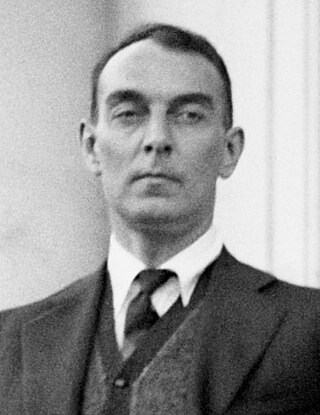
Ringgold Wilmer Lardner was an American sports columnist and short story writer best known for his satirical writings on sports, marriage, and the theatre. His contemporaries—Ernest Hemingway, Virginia Woolf, and F. Scott Fitzgerald—all professed strong admiration for his writing, and author John O'Hara directly attributed his understanding of dialogue to him.
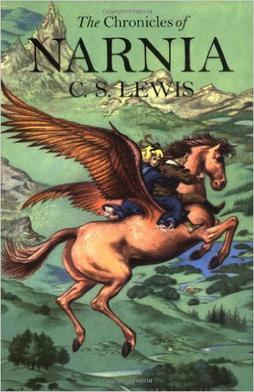
The Chronicles of Narnia is a series of seven portal fantasy novels by British author C. S. Lewis. Illustrated by Pauline Baynes and originally published between 1950 and 1956, the series is set in the fictional realm of Narnia, a fantasy world of magic, mythical beasts and talking animals. It narrates the adventures of various children who play central roles in the unfolding history of the Narnian world. Except in The Horse and His Boy, the protagonists are all children from the real world who are magically transported to Narnia, where they are sometimes called upon by the lion Aslan to protect Narnia from evil. The books span the entire history of Narnia, from its creation in The Magician's Nephew to its eventual destruction in The Last Battle.

Herbert Ernest Bates, better known as H. E. Bates, was an English writer, known for his gritty realistic short stories and novels set in the early to mid 20th century of England mainly. He was from the countryside and adored flowers and gardening, so much of his writing is informed by this. The semi-autobiographical "Love for Lydia" has detailed descriptions of nature in winter, and of the big grounds of Aspen Hall where he meets Lydia. His best-known works include Love for Lydia, Fair Stood the Wind for France,The Darling Buds of May, as well as My Uncle Silas. Many of his short stories were turned into tv series by British television in the 1970s.

Eleanor Farjeon was an English author of children's stories and plays, poetry, biography, history and satire.

Edward Jeffrey Irving Ardizzone,, who sometimes signed his work "DIZ", was a British painter, printmaker and war artist, and the author and illustrator of books, many of them for children. For Tim All Alone, which he wrote and illustrated, Ardizzone won the inaugural Kate Greenaway Medal from the Library Association for the year's best children's book illustration by a British subject. For the 50th anniversary of the Medal in 2005, the book was named one of the top ten winning titles, selected by a panel to compose the ballot for public election of an all-time favourite.

Uncle Wiggily Longears is the main character of a series of children's stories by American author Howard R. Garis. He began writing the stories for the Newark News in 1910. Garis penned an Uncle Wiggily story every day for more than 52 years, and published 79 books in his lifetime. According to his obituary in the Chicago Tribune, a walk in the woods in Verona, New Jersey was his inspiration. The books featured work by several illustrators, notably Lansing Campbell. Other illustrators of the series included George L. Carlson, Louis Wisa, Elmer Rache, Edward Bloomfield, Lang Campbell, and Mary and Wallace Stover.
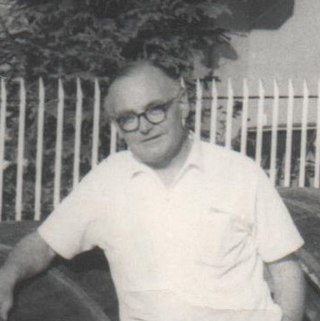
John Morris Reeves, known as James Reeves was a British writer principally known for his poetry, plays and contributions to children's literature and the literature of collected traditional songs. His published books include poetry, stories and anthologies for both adults and children. He was also well known as a literary critic and a broadcaster.
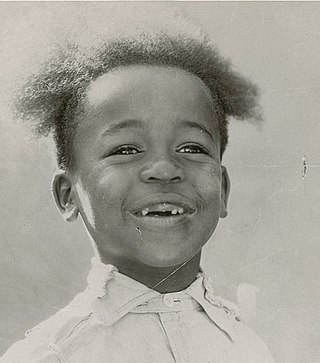
Eugene W. Jackson II was an American child actor who was a regular of the Our Gang short series during the silent Pathé era.
Noel Langley was a South African-born novelist, playwright, screenwriter and director. He wrote the screenplay which formed the basis for the 1939 film The Wizard of Oz and is one of the three credited screenwriters for the film. His finished script for the film was revised by Florence Ryerson and Edgar Allan Woolf, the other credited screenwriters. Langley objected to their changes and lamented the final cut upon first seeing it, but later revised his opinion. He attempted to write a sequel based on The Marvelous Land of Oz using many of the concepts he had added to its predecessor, but this was never released.
John Symonds was an English novelist, biographer, playwright and writer of children's books.

Mary Christianna Lewis, known professionally as Christianna Brand, was a British crime writer and children's author born in British Malaya.
Ursula Moray Williams was an English children's author of nearly 70 books for children. Adventures of the Little Wooden Horse, written while expecting her first child, remained in print throughout her life from its publication in 1939.

Jan Boyer Wahl was an American children's author. He was a prolific author of over 120 works, and was known primarily for his award-winning children's books, including Pleasant Fieldmouse, The Furious Flycycle, and Humphrey's Bear. Wahl sometimes jokingly referred to himself as "Dr. Mouse," a nickname given him by a young fan.

William Roderick James was a Canadian-American artist and writer of the American West. He is known for writing Smoky the Cowhorse, for which he won the 1927 Newbery Medal, and numerous "cowboy" stories for adults and children. His artwork, which predominantly involved cowboy and rodeo scenes, followed "in the tradition of Charles Russell", and much of it was used to illustrate his books. In 1992, he was inducted into the Hall of Great Westerners of the National Cowboy & Western Heritage Museum.

Elizabeth Wright Enright Gillham was an American writer of children's books, an illustrator, writer of short stories for adults, literary critic and teacher of creative writing. Perhaps best known as the Newbery Medal-winning author of Thimble Summer (1938) and the Newbery runner-up Gone-Away Lake (1957), she also wrote the popular Melendy quartet. A Newbery Medal laureate and a multiple winner of the O. Henry Award, her short stories and articles for adults appeared in many popular magazines and have been reprinted in anthologies and textbooks.
The Lewis Carroll Shelf Award was an American literary award conferred on several books annually by the University of Wisconsin–Madison School of Education annually from 1958 to 1979. Award-winning books were deemed to "belong on the same shelf" as Alice's Adventures in Wonderland and Through the Looking-Glass by Lewis Carroll, having enough of the qualities of his work.
Graham Greene (1904–1991) was an English novelist regarded by many as one of the greatest writers of the 20th century. Combining literary acclaim with widespread popularity, Greene acquired a reputation early in his lifetime as a major writer, both of serious Catholic novels, and of thrillers. He was shortlisted, in 1966 and 1967, for the Nobel Prize for Literature. He produced over 25 novels, as well as several plays, autobiographies, and short stories.
Jay O'Callahan is an American storyteller known for his performances at national and international storytelling festivals and in theaters worldwide. He performs from materials which he himself authors and is known for his large-scale oral stories that explore the rich details and nuances of different cultures and time periods through the perceptions of a central narrative character.
This is a bibliography of the works of the prolific illustrator and author Edward Ardizzone, CBE RA.
